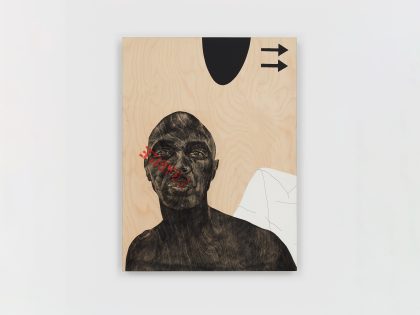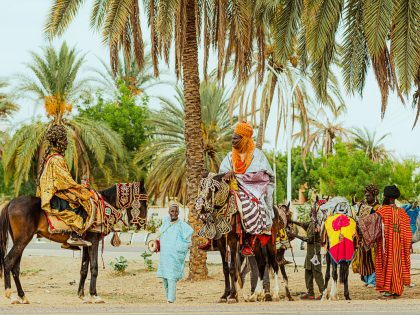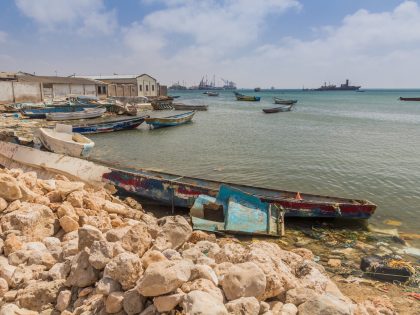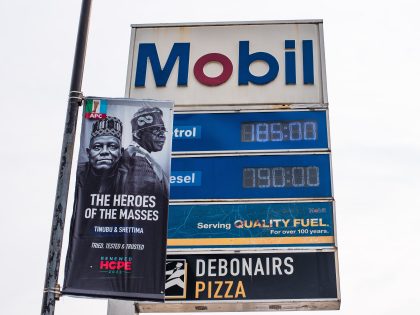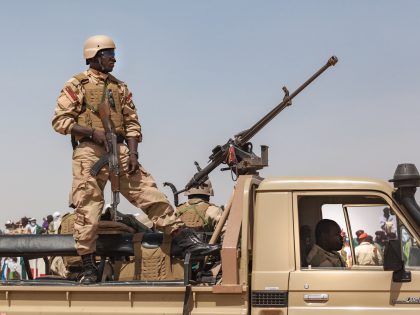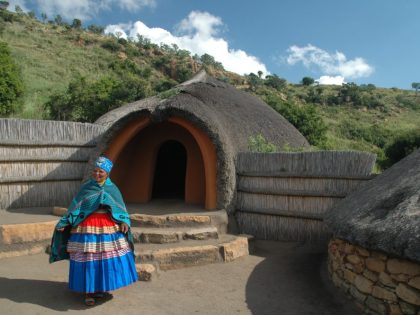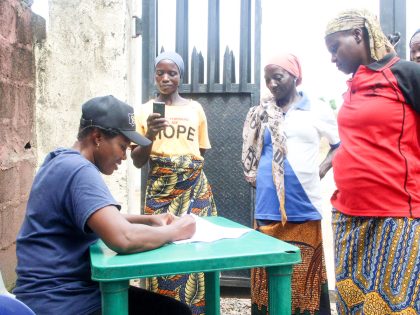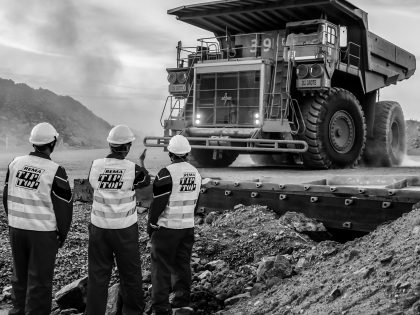Sending South African miners home to die
Sick mineworkers condemned to rural South Africa, die there with little or no continuation of care, follow up, or chemotherapy.

Still from the film 'They go to die."
Epidemiologist Jonathan Smith is completing a documentary called “They Go to Die,” about the lives of four former mineworkers that were sent home from the mine after contracting TB and HIV in the South African gold mines. The men – like thousands of men each year – are affected by a process known as “sending them home to die” that occurs in the South Africa mining industry, where migrant men who become sick with TB are sent home with little or no continuation of care, follow up, or chemotherapy (despite the fact that medical care is available on the mine premises).
The film brings to mind a scene from John Pilger’s 1998 documentary, “Apartheid did not Die” where at one point Pilger quotes Richard Spoor, a human rights lawyer, that by the late 1990s already 69,000 workers had died since the advent of diamond and gold mining in South Africa–mainly from lung disease and underground accidents. Wages are low and safety conditions remain parlous; care or compensation for injured and sick workers or in the case of the surviving relatives of men who die while on the job, is minimal or non-existent. In the film, Pilger goes to confront Michael Spicer, head of public affairs of Anglo-American, with this evidence. Spicer’s response is that “… all mining has risks, [that] accidents are highly regrettable … [and that] compensation may not always be to the degree desired.” Pilger then suggests, “… to the lay eye you’re saying the figure was regrettable, is shocking.” Spicer, clearly annoyed, accuses Pilger of engaging in “selective questions” and ends the interview.
While mining accidents do get media attention when they occur, the deaths of miners from TB is far more hidden–particularly when the men are sent home to die, dispersed across the entire region. In Smith’s film, he aims not only to highlight this issue, but to give the miners themselves a voice. He says, “I think it will bring out the life and joy that these four men share with their families. We all know that diseases cause morbidity and mortality, right? We don’t need to be told that again. That’s what we learn in school. But what is often overlooked is the life that this disease affects – the way it affects an organic, ever-changing infrastructure of family and community that plays a role in how an individual copes with disease. I am working as hard as I can to turn this human rights violation – all of this human suffering that goes on in this issue – into a positively cathartic experience. Not to just show the face of those ‘sent home to die’, but to show why it is important that it is resolved – because there are common threads of humanity to which we are all connected.” Here’s the film’s fundraising trailer:
I put some questions to Smith about his film and how he plans to use it to help end this widespread abuse of basic human rights:
What is your background and how did you end up making a documentary about this issue?
I’m an epidemiologist – not a filmmaker. I actually chuckle when people refer to me as the ‘director,’ or ‘producer.’ I don’t know what the hell a producer even does. Alongside this film, I am concurrently doing a research project that defines potential contextual factors that increase TB and HIV vulnerability in male migrant populations in South Africa, specifically gold miners. I love research – but this film is important for a few reasons. First, the research showing that this is a problem is already there. We know what’s happening. We know what’s causing it. We know what to do. We know how to stop it. This is an issue that needs very little further information to solve it. To me, given the body of research that exists, doing more research borders the line of unethical as a researcher. As far back as the 1903 the South African Presidential Commission, we see this problem: “The extent to which miner’s phthisis [TB] prevails at the present time is so great that preventative measures are an urgent necessity, and that the number of sufferers in our midst is a matter of keen regret.” That was over 107 years ago. In 1995, Judge Ramon Leon’s commission issued a damning report on health in South African mines and said “radical” steps needed to be taken to address this. 17 years later, his findings still hold true. So those in decision-making power – the government, union, and industry itself – know the issues, and know how to solve it. It is a matter of accountability; the historical narrative over the past century has been one of diffused accountability between these groups. They continue to pass the ball of responsibility. So the purpose of the film is to raise awareness and education in both the research/global health community and in civil society, placing outside accountability on the issue as a whole.
It is such a huge issue and a strong story – why do you think the problem does not get much media coverage, even within the region?
This is a problem is out of sight, out of mind. When a physical collapse in a mine occurs, you hear about it immediately. Its there, its in your face as a tangible, discreet occurrence. But with disease, it is behind the curtain, and much harder to pinpoint. TB deaths far outweigh the casualties of a physical injury, but if the miner has been sent home, his death is not in the spotlight – it falls in the cracks and crevices of the African continent. Coupled with this diffused accountability, certainly no one notices. And certainly, no one cares.
This is a frightful situation. We have seen amped up rhetoric: on paper, everyone is greatly concerned about health and safety on the mines. I mentioned the two reports earlier, and those were just two examples of fiery rhetoric that rhythmically becomes extinguished by apathy. In reality, few people with decision-making power seem to be concerned at all. The most recent audit report (2008) could not be more blunt: “There is a pervasive culture of non-compliance to legislative requirements (on health and safety). Inquiry after inquiry makes findings to the effect that risk assessments are not conducted, training is not done, early-morning examinations are not done, equipment is not maintained and the list goes on and on.” The commission’s own words were “the list goes on and on.” What a sad state of affairs. Given the existence of effective treatment for TB and mining companies’ huge resources, it should be easy to dramatically reduce the number of TB deaths among miners. Why do you think this has not happened?
50 years ago, our barriers to surmounting disease were biological – we didn’t know how to treat diseases, what proper methods were, etc. Today, our barriers are man made – they are caused by human rights violations such as this. This isn’t rocket science. There is no reason why we cannot have zero TB cases in the mines. There is some movement: the Chamber of Mines has set forth goals to reduce silica, TB, and other diseases over the course of several years, but this issue is something that can be stopped now – goals and deadlines are frivolous and allow for complacency. We need to stop the BS – this can be stopped. We know what to do. In the 1930s – which predates TB chemotherapy – the granite mines in Virginia had a terrible scourge of TB and silicosis, but they used the technology at the time, engaged the community, and actively sought to surmount the issue. And they did – with no TB medication and actually using South Africa’s silico-TB reports as the gold standard for what to do. The difference between Virginia in the 1930s and South Africa in 2012 is that South Africa has an endless pool of labor to draw from. If the Virginia mines lost a worker, they lost productivity. If South Africa loses a miner, they can easily replace him with one of the many desperate for a job. It is easier to release the sick man and hire a healthy worker. This effectively shifts the burden of disease back to the home of the man. This is a human rights violation of considerable dimension.
This is not entirely the fault of the industry itself – yes the mining industry does have a finger pointed at it, but there is legislation that allows this to go on. Miners, legally under statutes in South African legislation, are a population apart. Their rights are under separate jurisdiction than any other type of occupation (such as agriculture or construction). This legislation is outdated and inadequate. In terms of legislation for compensation, one mining physician wrote an op-ed titled, “Miner’s Compensation: Who Cares?” which lambasts the complicated legislation that makes receiving compensation virtually impossible (a Deloitte audit showed only 400 out of 28,000 men – 1.4% – received compensation when they were sent home). But technically the legislation is there, right? So they can say, “well Mr. Mkoko is entitled to compensation.” But he will never get it. There are masks such as this that each decision-making body hides behind.

This is not just a film – you see it as part of a larger campaign to bring an end to the problem – what else are you doing, besides trying to complete the documentary?
Primarily, the film is hopefully going to be used as a tool in three discreet ways. First, using it in a broader academic discussion of the issue will seek to spark future research on the issue to fill what gaps in the research remain. Secondly, showing it in this setting will also seek to promote dialogue and discussion on the issue among ‘outside’ decision makers: those organizations that play a role in global health as a whole. These two goals will hopefully forward the discussion on solving the issue in a concrete manner and place accountability on the inner circle of decision makers that can actually make change (the industry, South African Government, and union). Lastly, the film will hope to be aesthetically stimulating and approachable by a wide audience, educating and motivating civil society to place accountability on all powers involved. The goal is to have the film be a unifying thread between organizations in these categories. Then we will have one large push – a unifying push to solve this issue.
Here’s what I mean in ‘threading interested organizations together.’
You’re still trying to complete the film. How can people support you in your project?
This project is taking a different approach to what most films do. The ultimate goal of most filmmakers is to, obviously, create a film. Thus the call-to-action is after the film is made: you watch the film, and they tell you how to follow up. But like I said, I am not a filmmaker, and my ultimate goal is solving this issue. I am simply using the film as a tool to do so. So I am taking a bit more of a proactive approach, using parts of the rough-cut I have as a means to augment a discussion of the issue. There is no reason I should wait until the film is completed to raise this issue in the academic and global health arena. So instead of pulling the issue, I am pushing it, hoping to seed awareness that leads to development down the line.
So support could come in many ways. Global health and human rights organizations could come on board to support the film’s goals, Universities could host a pre-screening, and individuals could sign up on the website. Like I said, the film will hope to be a nexus of all of all interested organizations and individuals. At the moment, the major holdup is funding – which has primarily come from grassroots efforts where we have accepted donations on the website. All the filming is completed, so the barrier now is funding funds to finish the film, promotion, and entering it into festivals.
Like I said, this is a proactive approach, so as we develop goals and initiatives that will afford individuals to take action, we will release them – that’s why signing up is so important. It’s not signing up to get a newsletter or something, but its signing up to be on call, so when we say, “we’re pushing for X or Y,” it wont just be me screaming in the wind, but rather backed by numerous individuals.











